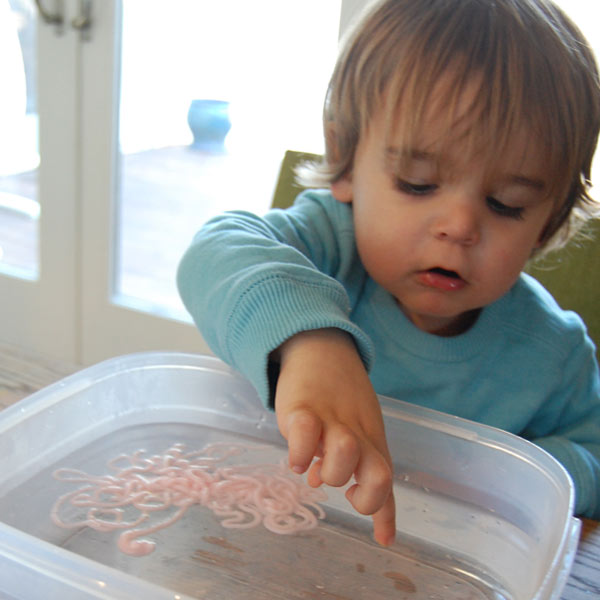Combining different everyday substances allows children to playfully experiment with complex chemistry concepts like relative density and solutions.
Materials Required
- Clear plastic tub
- Water
- Dish soap
- Shaving cream
- Oil
- Shampoo
- Conditioner
- Measuring cups
- Glitter (optional)
- Liquid watercolor or food coloring (optional)
- Additional kitchen materials/liquids for investigation (optional)
- Paper and pencil (optional)
Instructions
- To begin the activity, fill the clear plastic tub with warm water. Set up dish soap, shaving cream, oil, shampoo, conditioner, and any other materials being used.
- Provide children with the opportunity to play with the materials so they can become familiar with their properties.
- Invite children to make predictions about whether each liquid/material will sink or float, then try it out and see what happens. Encourage children to record their observations.
- Using the measuring cups, children can try different amounts of the materials. Draw their attention to differences and similarities between the way materials respond to each other and the water.
- To begin the activity, fill the clear plastic tub with warm water. Set up shaving cream, oil, glitter, dish soap and any other materials.
- Provide children with the opportunity to play with the materials so they can become familiar with their properties.
- Invite children to make predictions about whether each liquid/material will sink or float, then try it out and see what happens. Encourage children to record their observations.
- Using the measuring cups, children can try different amounts of the materials. Draw their attention to differences and similarities between the way materials respond to each other and the water.
Additional Tips
Try these add-on activities:
- Use a chart for recording observations. Notice what floats, what sinks, and what dissolves in the water. Based on prior experience with the liquids, make a hypothesis about what will happen to each material, then observe whether or not your hypothesis was correct.
- Invite children to collect additional materials to test.
- Try using food coloring or liquid watercolor to change the color of a liquid. Make observations about how that affects the properties of the liquid.


